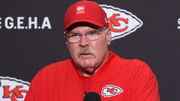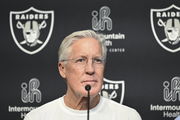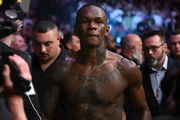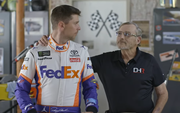

Equestrian sports have a long and rich history in the United States. This sport is steadily gaining popularity in the United States, though at a somewhat slower pace. This is likely due to a number of factors, including the high cost of owning and maintaining horses, the lack of equestrian facilities in some areas, and the perception that equestrian sports are for the elite. Despite these challenges, there is growing interest in equestrian sports in the US. This is because of the success of American equestrian athletes at the international level, such as Beezie Madden and McLain Ward.
Watch What’s Trending Now!
In a sport filled with passionate stakeholders and a long history, the question of how to best govern horse racing has always been a contentious one. Recent discussions surrounding the future of horse racing have once again brought this issue to the forefront. Notably, Fred Pope, a figure deeply connected to the industry, raised concerns about the difficulties in establishing a successful owner-driven organization within the world of horse racing. Mike Repole’s call for owners to regain control of the sport has also ignited a debate about its governance. But is it really as simple as it sounds?
ADVERTISEMENT
A failed dream
Fred Pope’s attempt to create the National Thoroughbred Association (NTA), a major league for horse racing akin to professional golf’s PGA Tour, seemed promising on the surface. Backed by over 100 owners and a significant financial investment, the NTA aimed to reshape the sport. However, despite its potential, it ultimately failed to materialize.
Pope refutes the notion that the Interstate Horseracing Act (IHA) of 1978 was the primary obstacle in NTA’s path. He likens the IHA to the Breeders’ Cup, suggesting that signing contracts with host tracks should have been straightforward. However, the reality is more complicated than it appears. The Breeders’ Cup merely required one racetrack to cede a single day of revenue each year. In contrast, NTA’s vision involved multiple tracks continuously leasing their facilities, an endeavour that posed far greater challenges.
Top Stories
Andy Reid Announces Decision on Leaving Chiefs on Monday, Days After Playoff Elimination

Jon Rahm Receives Fresh Warning After Brooks Koepka Quit LIV Golf Abruptly: ‘In the Worst Spot’

Sources: Raiders to Fire Pete Carroll After Chiefs Game; Tom Brady Holds Say on John Spytek’s Future

LeBron James Stats on His Birthday: How NBA Icon Has Performed on December 30th

“Nothing Lasts Forever”: Israel Adesanya Opens Up on Overcoming Suicidal Thoughts

Denny Hamlin Faces Unthinkable Loss After Tragic House Fire on Parent’s 52nd Anniversary Night

ADVERTISEMENT

ADVERTISEMENT
According to Pope, the NTA’s demise resulted from a power shift within the industry, particularly the role played by Jockey Club chairman Ogden Mills Phipps in flipping Tim Smith, the individual initially hired to assist in launching the NTA. The concept of NTA was meant to bypass federal laws governing interstate simulcasting. However, in practice, it was much harder to overcome these barriers, as Mark Twain’s famous words, “How empty is theory in the presence of fact,” remind us.
A dumb but serious question
Mike Repole’s call for owners to reclaim control of horse racing echoes the sentiment of many industry insiders. However, what remains unclear is how exactly this new vision of governance would operate. It raises a vital but challenging question: Can horse racing transition from a state-regulated industry to a self-regulated one, mirroring major league sports like the NFL, MLB, NBA, and PGA?
ADVERTISEMENT
Read More: US Equestrian Federation Implements New Rule Following Multiple Equine Fatalities This Season
Major league sports are primarily self-regulated by owners, overseeing rules, officials, drug testing, and TV agreements without state or federal interference. In contrast, horse racing relies on state and federal regulations like the Wire Act, Interstate Horseracing Act, and Horseracing Integrity and Safety Act due to the sport’s heavy gambling involvement. The difference stems from revenue sources, as horse racing’s betting income necessitates strict oversight, while state gambling commissions focus on regulating betting companies, not major sports leagues.
So, the perplexing but vital question remains: Should horse racing continue to endure state regulatory oversight when it has the potential to self-regulate like other major sports leagues?
ADVERTISEMENT
Watch The Story:?After Five Horses Meet Their Death At Belmont Park, New York Racing Association Releases Statement of Equine Safety
ADVERTISEMENT
ADVERTISEMENT
ADVERTISEMENT

